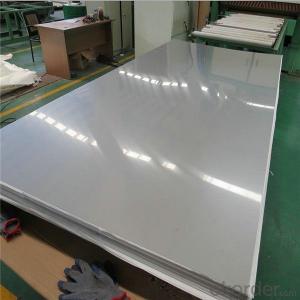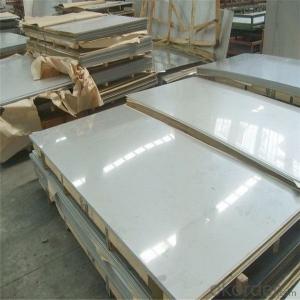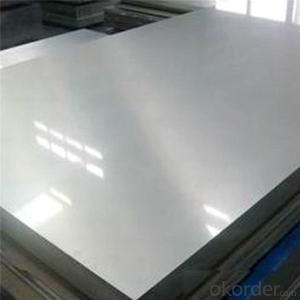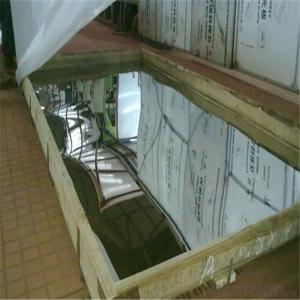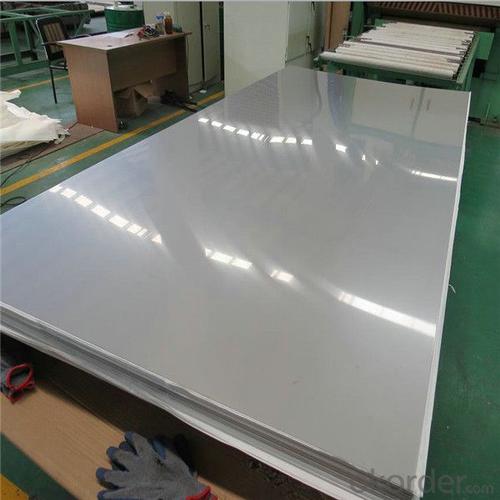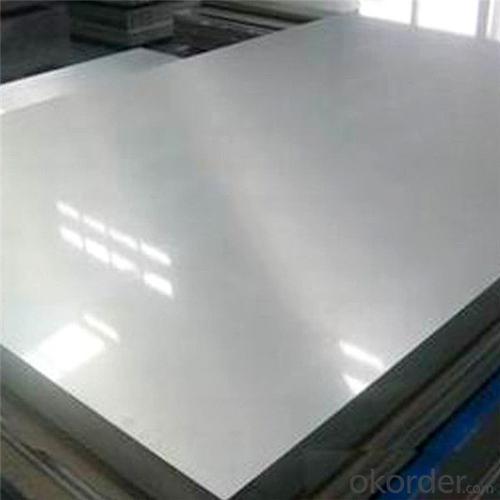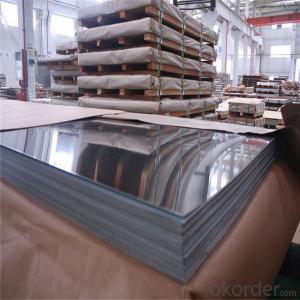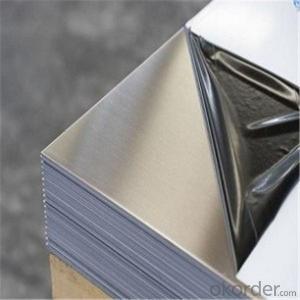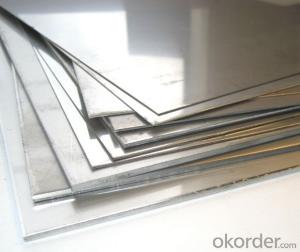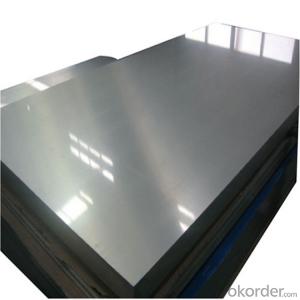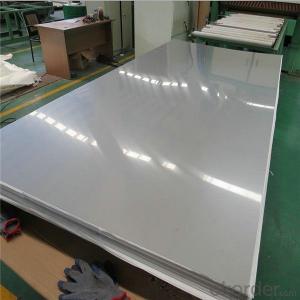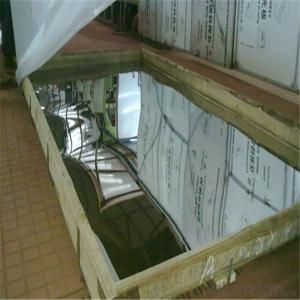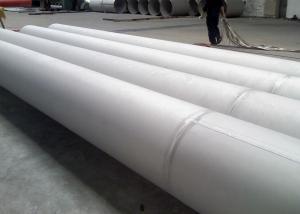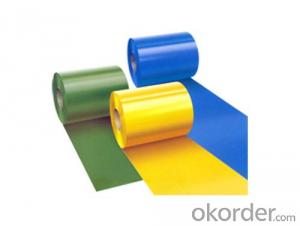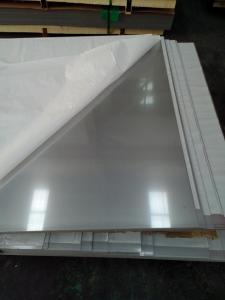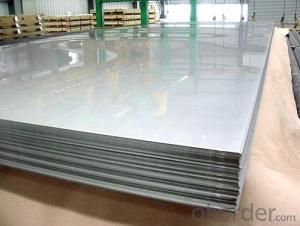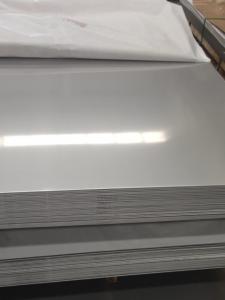Stainless Steel Sheet with 304/316/321 ASTM
- Loading Port:
- Shanghai
- Payment Terms:
- TT OR LC
- Min Order Qty:
- 2 m.t.
- Supply Capability:
- 20000 m.t./month
OKorder Service Pledge
OKorder Financial Service
You Might Also Like
Specification
. Specifications about Stainless Steel Sheet with 304/316/321 ASTM
Commodity | Professional 430 201 202 304 304l 316 316l 321 310s 309s 904l stainless steel sheet |
Grade | 201,202,304,304L,316,316L,310S,309S,321,301,310,410,420,430,904L |
Brand | TISCO ,BAOSTEEL,POSCO,JISCO,LISCO |
Certification | SGS,BV,IQI,TUV,ISO,etc |
Thickness | 0.2mm-150mm |
Width | 1000,1219,1250,1500mm, or as your requirements |
Length | 2000,2438,2500,3000,6000mm, or as your requirements |
Surface | No.1, 2B, BA, 8K Mirror, Hairline,satin, Embossed,brush,No.4,HL,matt,pvc film,laser film. |
Standard | ASTM,AISI,SUS,JIS,EN,DIN,GB, ASME,etc |
Delivery time | 5-7 days after confirming the order |
MOQ | 1 Ton |
Advantages | Showing the splendor of your quality, wearresistant as well , strong corrosion resistance and decorative effect, durable and beautiful in good taste. |
Stainless Steel Sheet with 304/316/321 ASTM

Stainless Steel Sheet with 304/316/321 ASTM
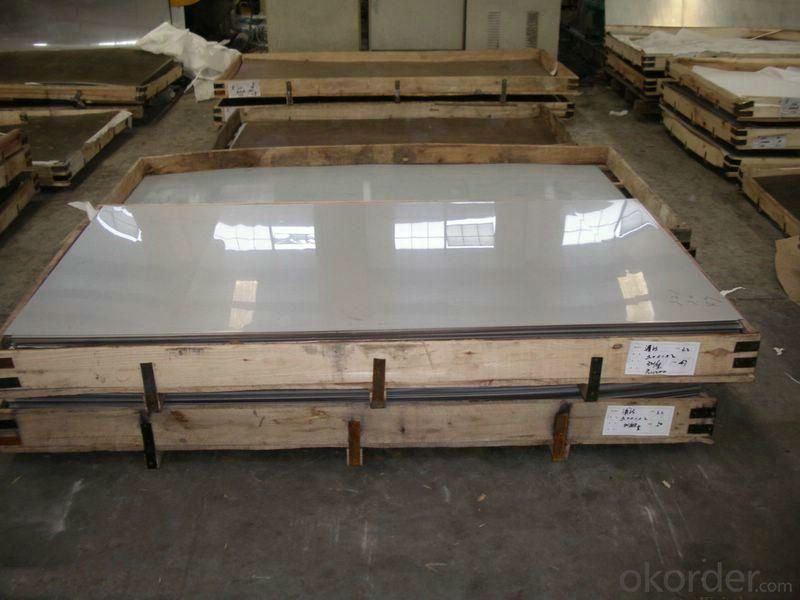
5.Characteristics and application Stainless Steel Sheet with 304/316/321 ASTM
Surface finish | Characteristics and application |
NO.2B | The surface brightness and flatness of no2B is better than no2D. then through a special surface treatment to improve its mechanical properties,No2B could nearly satisfy comprehensive uses. |
NO.3 | Polished with abrasive belt of git#100-#200, have better brightness with discontinuous coarse stria, used as inner and external ornaments for building, electrical appliances and kitchen utensils etc. |
NO.4 | Polished with abrasive belt of grit #150-#180,have better brightness with discontinuous coarse stria,but thinner than No3, are used as bathtub buildings inner and external ornaments electrical appliances kitchen utensils and food processing equipment etc. |
HL | Polished with abrasive belt of grit #150-#320 on the NO.4 finish and has continuous streaks, mainly used as buildings ornaments elevators,door of building, frontal plate etc. |
BA | Cold rolled, bright annealed and skin-passed, the product have excellent brightness and good reflexivity like mirror,kitchen apparatus,ornament etc. |
8K | The product have excellent brightness and prefer reflexivity can to be the mirror. |
5.Payment : Usually 30% of the amount by T/T as deposit , and the balance money shall be paid by T/T after got the faxed B/L.Or L/C at sight .
6. Package: Kraft paper+Hard board+metal/wooden pallet+metal strip; or based on the customer requirement.
7. USE: construction.machinebuilding,container manufacturing,shipbuilding,bridges and so on.
The operating philosophy of our company : high quality and best service and competitive price and prompt delivery .We sincerely welcome the old and new customers to inquiry the price . any questions and needs you have , pls don't hesitate to contact us anytime .
- Q: How do you prevent pitting on stainless steel sheets?
- To prevent pitting on stainless steel sheets, it is important to avoid exposure to corrosive substances such as chloride-based cleaners or acids. Regular cleaning using mild, non-abrasive cleaners and soft cloths is recommended. Additionally, ensuring proper ventilation and avoiding prolonged exposure to high humidity or saltwater environments can help prevent pitting. Regular inspections and prompt repairs of any scratches or damages can also contribute to maintaining the integrity of stainless steel sheets and preventing pitting.
- Q: What is the maximum thickness of a stainless steel sheet?
- The specific grade or type of stainless steel being used can cause the maximum thickness of a stainless steel sheet to vary. Typically, stainless steel sheets can have a thickness ranging from 0.4 millimeters (0.0157 inches) to 100 millimeters (3.937 inches) or more. However, it's important to note that the availability of thicker sheets may be limited and can differ depending on the supplier or manufacturer. Furthermore, the composition and intended use of certain stainless steel alloys may impose different thickness limits. Therefore, it is always recommended to consult with a supplier or refer to the specifications provided by the manufacturer to determine the maximum thickness of the specific stainless steel sheet you require.
- Q: Are stainless steel sheets suitable for electrical enclosures?
- Indeed, electrical enclosures can be made using stainless steel sheets. Stainless steel possesses remarkable attributes such as exceptional strength, resistance to corrosion, and durability, rendering it a perfect material for safeguarding electrical components. It affords a superior level of safeguarding against environmental factors like moisture, dust, and extreme temperatures. Furthermore, stainless steel boasts commendable electrical conductivity, which is indispensable for proper grounding and shielding. It also provides a good degree of electromagnetic compatibility (EMC), thereby diminishing the likelihood of electromagnetic interference (EMI) in delicate electrical equipment. Additionally, stainless steel can be effortlessly cleaned and maintained, guaranteeing a long-lasting and dependable enclosure for electrical applications.
- Q: What are the different sheet sizes available for stainless steel?
- The different sheet sizes available for stainless steel vary depending on the manufacturer and specific requirements, but common sizes include 4x8 feet, 4x10 feet, and 5x10 feet.
- Q: How do I prevent corrosion under insulation on stainless steel sheets?
- To prevent corrosion under insulation on stainless steel sheets, there are several steps you can take: 1. Proper insulation selection: Choose insulation materials that are compatible with stainless steel and have a low water absorption rate. Avoid using materials that can cause galvanic corrosion when in contact with stainless steel. 2. Adequate insulation thickness: Ensure that the insulation thickness is sufficient to prevent moisture condensation on the stainless steel surface. Condensation can trap moisture and accelerate corrosion. Consult with an insulation specialist to determine the appropriate thickness for your specific application. 3. Vapor barriers: Install vapor barriers between the insulation and the stainless steel sheets. Vapor barriers act as a moisture barrier, preventing the ingress of water or moisture that can lead to corrosion. These barriers can be made of materials such as foil or plastic films. 4. Proper installation: Ensure that the insulation is properly installed, with no gaps or areas where moisture can accumulate. Pay close attention to joints, seams, and connections, making sure they are tightly sealed to prevent water penetration. 5. Regular inspection and maintenance: Regularly inspect the insulation system to identify any signs of damage, such as leaks or deterioration. Promptly repair any damaged insulation or vapor barriers to prevent moisture from reaching the stainless steel surface. 6. Ventilation: Provide adequate ventilation to prevent moisture buildup in enclosed spaces. Good airflow can help reduce the chances of condensation and subsequent corrosion. 7. Cathodic protection: Consider using cathodic protection methods, such as sacrificial anodes or impressed current systems, to protect stainless steel sheets from corrosion. These methods create an electrical current that counteracts the corrosion process, extending the lifespan of the stainless steel. Remember, it is essential to consult with corrosion specialists or insulation experts to ensure the best practices are implemented for your specific application and environment.
- Q: What are the applications of stainless steel sheets?
- Stainless steel sheets have a wide range of applications due to their various beneficial properties. Some of the common applications of stainless steel sheets include: 1. Construction: Stainless steel sheets are widely used in the construction industry for various purposes. They can be used for cladding, roofing, and wall panels, as they provide durability, corrosion resistance, and an attractive appearance. Stainless steel sheets are also used for structural components such as beams, columns, and reinforcement bars. 2. Kitchenware: Stainless steel sheets are extensively used in the production of kitchen appliances and utensils. These sheets are used to manufacture sinks, countertops, backsplashes, and cabinets. Stainless steel is preferred in the kitchen due to its hygienic properties, resistance to staining and corrosion, and easy cleaning. 3. Automotive industry: Stainless steel sheets find applications in the automotive industry for the production of various components. They are used for manufacturing exhaust systems, mufflers, fuel tanks, and decorative trims. Stainless steel sheets provide corrosion resistance, heat resistance, and durability in harsh automotive environments. 4. Medical equipment: Stainless steel sheets are widely used in the medical field for the production of surgical instruments, implants, and medical equipment. The corrosion resistance and biocompatibility of stainless steel make it an ideal material for these applications. 5. Chemical processing: Stainless steel sheets are extensively used in the chemical industry due to their corrosion resistance and ability to withstand high temperatures. They are used for manufacturing storage tanks, pipes, valves, and pressure vessels. Stainless steel sheets are preferred in chemical processing applications to avoid contamination and ensure the safety of the process. 6. Energy and power generation: Stainless steel sheets are used in power plants, refineries, and other energy generation facilities. They are used for manufacturing boilers, heat exchangers, and condensers due to their high-temperature resistance, corrosion resistance, and strength. 7. Decorative applications: Stainless steel sheets are often used in architectural and decorative applications. They are used for decorative panels, elevator doors, signage, and furniture. The versatility of stainless steel allows for various finishes and textures, making it a popular choice in interior and exterior design. In conclusion, stainless steel sheets have numerous applications in various industries. Their corrosion resistance, durability, strength, and aesthetic appeal make them a versatile material for a wide range of purposes.
- Q: 1mm how much is the thickness of the 304 stainless steel sheet a square?
- 1mm 304 stainless steel plate, about 160 yuan a square, this may be based on your amount to determine the amount of large, you can also pay the price, the amount of small may not be. Jiashan Rongchang sliding bearings can also provide 1mm 304 stainless steel plate self lubrication skateboards, it is composed of 3 layers
- Q: How do I clean and maintain stainless steel sheets?
- To clean and maintain stainless steel sheets, start by wiping them down with a mild soap and water solution or a non-abrasive cleaner. Rinse thoroughly and dry with a clean cloth to prevent water spots. Avoid using harsh chemicals, abrasive sponges, or steel wool as they can damage the surface. For tougher stains or fingerprints, you can use a vinegar and water solution or specialized stainless steel cleaners. Finally, regularly polish the sheets with a stainless steel cleaner or olive oil to restore their shine and protect against future stains.
- Q: What are the different types of perforated patterns available for stainless steel sheets?
- There are several different types of perforated patterns available for stainless steel sheets, including round, square, slotted, and decorative patterns. Each pattern offers a unique aesthetic appeal and functional characteristics, making it suitable for various applications.
- Q: Are stainless steel sheets resistant to saltwater corrosion?
- Yes, stainless steel sheets are highly resistant to saltwater corrosion. Stainless steel is known for its exceptional corrosion resistance, making it an ideal material for applications exposed to saltwater environments. The chromium content in stainless steel forms a protective oxide layer on the surface, which acts as a barrier against corrosion. This oxide layer prevents the steel from coming into direct contact with saltwater, thereby reducing the risk of corrosion. Additionally, stainless steel grades such as 316 and 316L are specifically designed to offer better resistance to saltwater corrosion, making them even more suitable for marine applications. Overall, stainless steel sheets are a reliable choice for saltwater environments due to their excellent corrosion resistance properties.
Send your message to us
Stainless Steel Sheet with 304/316/321 ASTM
- Loading Port:
- Shanghai
- Payment Terms:
- TT OR LC
- Min Order Qty:
- 2 m.t.
- Supply Capability:
- 20000 m.t./month
OKorder Service Pledge
OKorder Financial Service
Similar products
Hot products
Hot Searches
Related keywords
